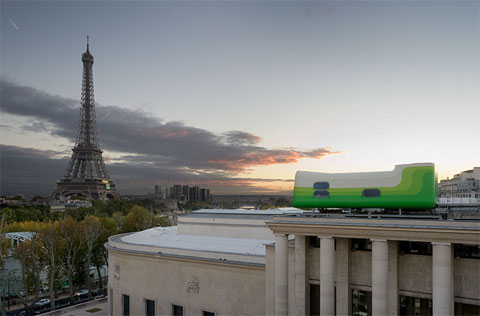Zaha Hadid’s Maxxi Museum is located in Rome, and was
completed in 1998. It is certainly a
unique building that stands out among its surroundings. When we visited Rome as a studio, I was
expecting to see many ancient structures such as the Coliseum, but I did not
expect to come across a modern piece of architecture such as the Maxxi. It was nice to experience some modern
architecture in the midst of all of the old structures. When we first arrived at the Maxxi, I really
loved it. The concrete walls and use of
glass made the building feel clean and superior to the ones that surrounded
it. However, once I went inside the
museum, it seemed as if Hadid paid more attention to the outside than she did
to the interior. It was simply a
confusing space. The whole time I was in
the museum, I felt like I was going around in circles in the same spaces. I was never led to a new exhibit by the
building itself, instead I had to find my way by walking around and looking for
something new. I believe that a well-designed
museum should lead the visitors around to the different spaces. In fact, there was a whole side of the museum
that I missed during our visit because it was a confusing space.
In most aspects, the interior of the building
did not live up to the appeal of the exterior.
However, my favorite part about the Maxxi, would have to be the
ceilings. I found myself looking up
almost the whole time I was in the museum watching the way the ceiling became
almost like a wave. Hadid used the ceiling
to allow natural light to enter the spaces because there are almost no windows
in the entire exhibit space. I think that the ceilings were a very successful part of this building. If she had not designed the ceilings the way she did, the spaces would have felt incredibly cold and dark.
I chose to focus my analysis of the Maxxi on the ceilings, because in my opinion they were the one element of the structure that made me truly enjoy the interior space. I thought it was really interesting how normal windows were not the source of natural light in this building, and instead the ceiling was. The concrete elements that were used to break up the glass are very successful in creating an interesting rhythm. They give an organic feel to a very cold structure, and I think that is key to making this an enjoyable space. In my cutting and drawings I wanted to portray this organic feel among the rigidity.
 |
| ceiling sketch |
 |
| ceiling sketch |
 |
| ceiling sketch |








































